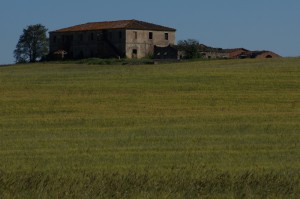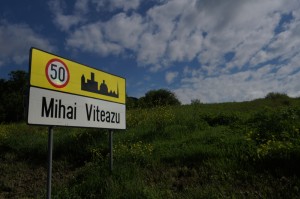The mention of Italy conjures up images in the minds’s eye and Tuscany is probably at the forefront of those visions.
Gently rolling hills covered in a patchwork of crops, olive groves, forests and fields.
Old stone houses with cypress lined driveways.
The Vespa rider’s ‘muffin tops’ shuddering as they career over the cobblestone streets in the towns and small hilltop villages.
This is the quintessential Italy.
We have just spent two weeks on a farm in the heart of the Val di Merse, southwest of Siena. It’s a working property with more heavy equipment than you would see at a Eurora Field Day.
Tenuta di Papena occupies 200 hectares of undulating Tuscan countryside. It’s a menagerie of dogs, cats, horses and an orphaned deer.
We visited the local villages of Chiusdino, Monticiano, The Abbey of San Galgano as well as day trips to Siena and San Gimignano.
The San Galgano Abbey was built between 1218 and 1288 and is the first Gothic church in Tuscany.
Next to the abandoned abbey is the Hermitage of Monte Siepi. The chapel is a rotund with a classical high domed ceiling.
Siena has a strong bond with Rome as is evident by the statues of Romulus and Remus that are all over the city.
Legend has it that Senio, the son of Remus with his brother, Aschio fled Rome to Siena Vecchio and founded the city after a mythological race known as the ‘Palio alla Lunga’.
San Gimignano is another walled Medieval city, a smaller version of Siena with a central square and cobbled streets. It’s famous for its towers that dominate the skyline. There were once more than 70 but now only 14 remain. One of these towers was featured in M.C. Escher’s famous 1923 woodcut.
Almost as strange as Escher’s drawings are a series of sculptures, of naked men, that are dotted around the town.
Summer has come to this part of Italy and the farm was hard at work. Those fields that had’t been mown were alive with wildflowers, bees, beetles and butterflies.
Everywhere we looked it was, as you would expect, picture perfect.














The Photo Thieves. (June 2012)
Thursday, June 21st, 2012There is a group that are constantly looking for the great shot – that someone else is taking.
You are standing there framing up an historic monument, city scape or scenic vista and suddenly you get the feeling there’s someone behind you.
And sure enough when you turn around, there they are, lining up the same shot.
Then you realise that it’s not a coincidence, when you walk down the street to take another shot and they are right behind you.
I have to wonder if their snaps are not better than mine?
Posted in Comment | 1 Comment »